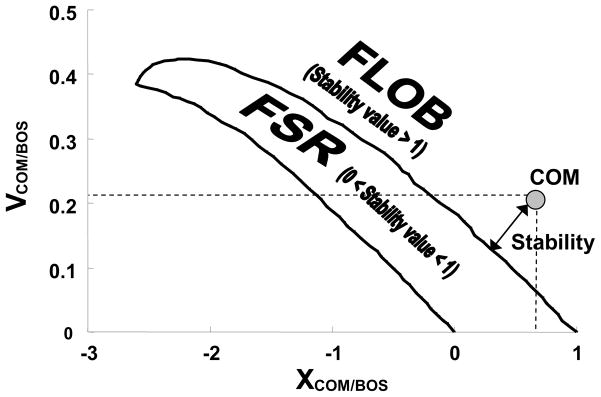Figure 2.
Shown is the instantaneous center-of-mass (COM) state (circle) with the computer model predicted boundary of the feasible stability region (FSR). The COM position (XCOM/BOS) was defined as the absolute COM position in anteroposterior direction relative to the rear of BOS and normalized by foot length. The COM velocity (VCOM/BOS) was calculated from the differentiation of the COM position and normalized to the square root of (gh), where g was the acceleration due to gravity and h was the body height. Stability (or forward instability) was measured as the shortest distance between the instantaneous COM state (i.e., in its position and velocity phase plane) and the FSR boundary against forward loss of balance (FLOB). A stability value of greater than 1 indicated FLOB, which is necessary during walking to achieve forward progression (but not excessive forward instability as in the case of a trip, which would require taking a compensatory step, Wu et al., 2007). A stability value between 0 and 1 indicated that the COM state was within the FSR, in which balance can be restored without the need to take extra step.

